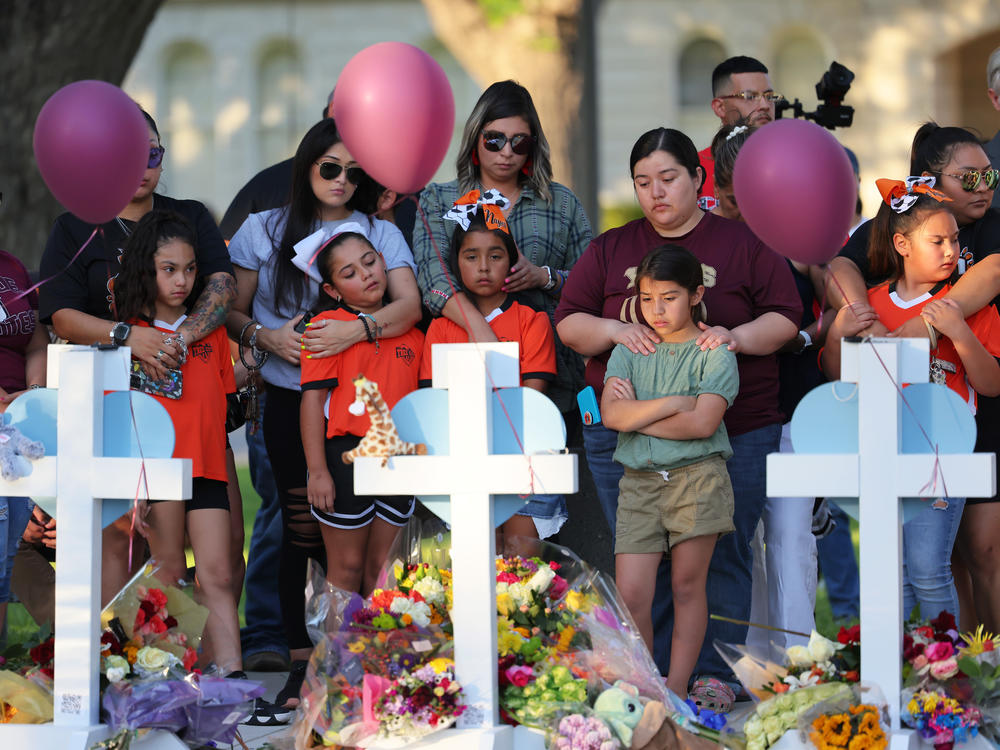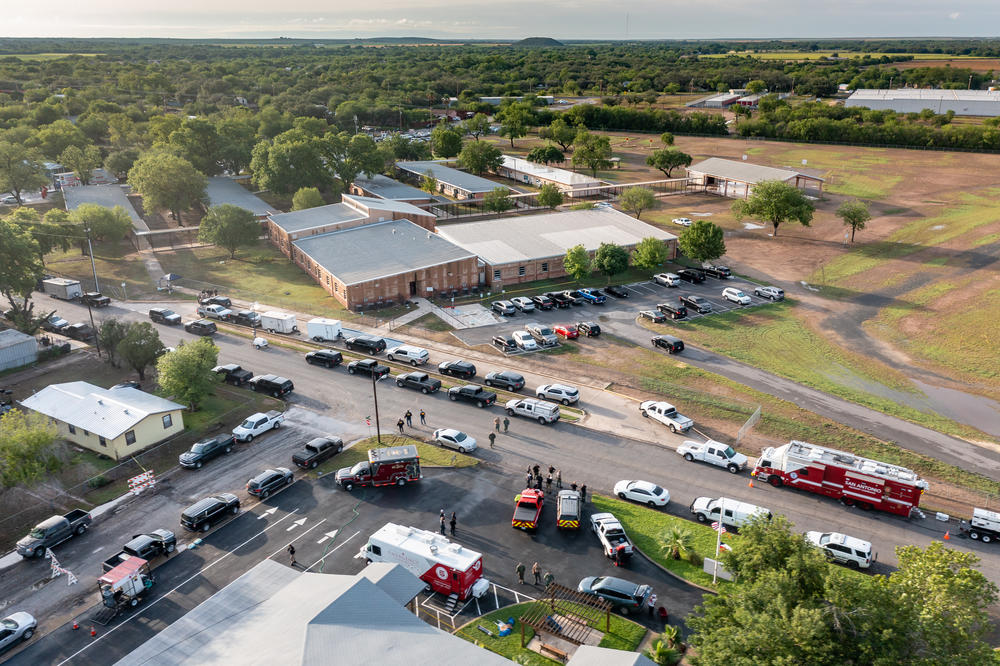Section Branding
Header Content
Here's what experts say police should have done in the Uvalde school shooting
Primary Content
In active shooter situations, police officers are trained to confront the shooter immediately — not to wait.
But in this week's elementary school shooting in Uvalde, Texas, the gunman spent more than an hour inside the school before a tactical unit killed him, despite officers' earlier arrival. That has raised questions about the police response — and whether some of the 19 children and two teachers who died might have been saved if officers had taken a different approach.
"When there's an active shooter, the rules change," Texas Department of Public Safety Director Steve McCraw told journalists on Friday, as he gave the most complete account yet of the tragedy that unfolded at Robb Elementary.
McCraw identified a crucial flaw in the police strategy: The incident commander on the scene believed the situation had moved from being an active shooter scenario to one where the gunman had barricaded himself inside the school, McCraw said, with "no kids at risk," because any civilians inside were already dead.
That left a mass of officers waiting for tactical gear and keys to unlock a door, while at least two students inside frantically called 911 to plead for help.
"From the benefit of hindsight, where I'm sitting now, of course it was not the right decision," McCraw said. "It was the wrong decision, period. There's no excuse for that."
"Those kids need help" immediately, an expert says
There are few national standards when it comes to policing, but there is some consistency. In the years since the Columbine school shooting, law enforcement officers have been trained to engage an active shooter as soon as possible.
"The protocol is, as soon as you determine there is an active shooter you don't wait for anyone," says Steve Ijames, an expert who has led training sessions on active-shooter situations for police agencies since the mid-1990s.
"You enter and move [to] neutralize and it may be at your peril," Ijames said. "It'd be great if you had some help — but I can assure you those kids need help more than you need help."
After the gunman shot at police officers in Uvalde, they called for resources like body armor and marksmen, assuming he was barricading himself inside. But McCraw said on Friday that if police believed people were still alive in the school, they would have been obligated to show greater urgency. There were "19 officers in there," he said, adding, "there's plenty of officers to do whatever needed to be done."
On that point, McCraw seemed to agree with parents who exhorted officers at the scene to take action. He said police should have closed in on the gunman as soon as they could do so, rather than worry about having the right equipment, or securing the outer perimeter.
Texas embraces widely accepted doctrine about dealing with an active shooter, McCraw said.
"That doctrine requires officers — we don't care what agency you're from, you don't have to have a leader on the scene — every officer lines up, stacks up, goes and finds where those rounds are being fired at, and keeps shooting until the subject is dead. Period," he said.
The best line of defense is keeping all the doors locked
Training experts say that what's crucial to school safety in an active shooter situation is for police agencies to work with school districts to draft emergency protocols, with details about schools' layout and personnel.
The very best way to make sure kids are safe inside their school, Ijames says, is having systems in place to make sure a dangerous person doesn't gain access to it at all.
"The first step is not about the police responding to an in-progress tragedy," he said. "It's keeping the problem outside the school. So it's physical security first."
That entails locking doors and setting up practices to secure student areas if a person does get inside. In Uvalde, McCraw said that the gunman entered Robb Elementary through a back door that a teacher had left propped open. Moments earlier, the teacher had left the school to get her cellphone.
Experts say the tragic lesson of this latest school mass shooting is that there must be constant vigilance. And that law enforcement has to continue to adapt strategies and tactics to fight the devastation that's occurred in so many schools in the U.S.
Copyright 2022 NPR. To see more, visit https://www.npr.org.


